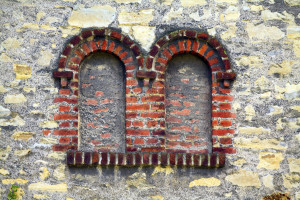09 Oct A Tax on Light and Air: The European Window Tax
 As early as the 1600s, the European countries of Britain, France and Scotland began imposing a window tax on their citizens, which remained in effect as late as 1926 in France. This was a property tax that was based on the number of windows a home had, and it had quite an effect on social views and architecture.
As early as the 1600s, the European countries of Britain, France and Scotland began imposing a window tax on their citizens, which remained in effect as late as 1926 in France. This was a property tax that was based on the number of windows a home had, and it had quite an effect on social views and architecture.
The Logic Behind the Tax
During the time that the window tax was enforced, citizens of these countries viewed income taxes as a dirty practice. Still, the government wanted to be able to tax its citizens based on their wealth, so they came up with the window tax as a way to tax prosperous households. The idea was that bigger homes had more windows, and if a property owner could afford a home with many windows, they could afford to pay more taxes.
The Window Tax’s Influence
Applying a tax to the windows in a home elevated the social status attached to windows. Windows in themselves were a bit luxurious during this time. So, building a home with lots of windows when it would increase your taxes told others that you had money.
Just as some people were increasing their number of windows during this time in order to make a statement, others were decreasing them in order to try and save some money. Homes designed for those on a modest budget during this time would feature as few windows as possible. For those who already had a home with more windows than they could afford, some of the windows would have to be bricked up to avoid the tax. Some houses even painted on windows to give the appearance of wealth without having to pay the tax.
Lingering Evidence
A tour of 18th and 19th century dwellings in England, France or Scotland today still yields evidence of the window tax. Some homes will still have sections of brick or stone that don’t match the rest of the house where windows were closed off. Painted windows can still be seen on many buildings.
The window tax didn’t apply to dairy rooms, cheese rooms, or milk houses, so residents would leave a carving in the support beams of the window or door, stating the rooms purpose for the tax assessors. These carvings can still be seen in homes where the original timbers have been preserved.

Sorry, the comment form is closed at this time.